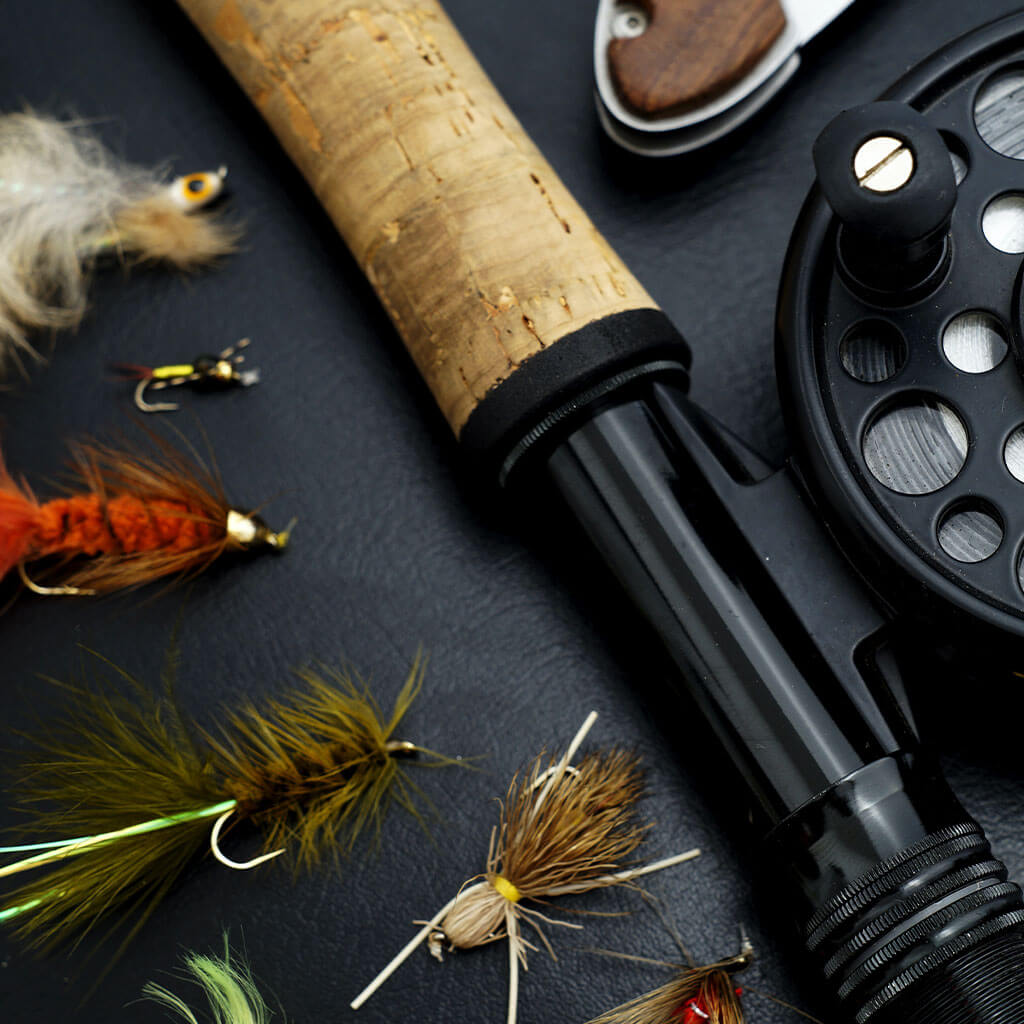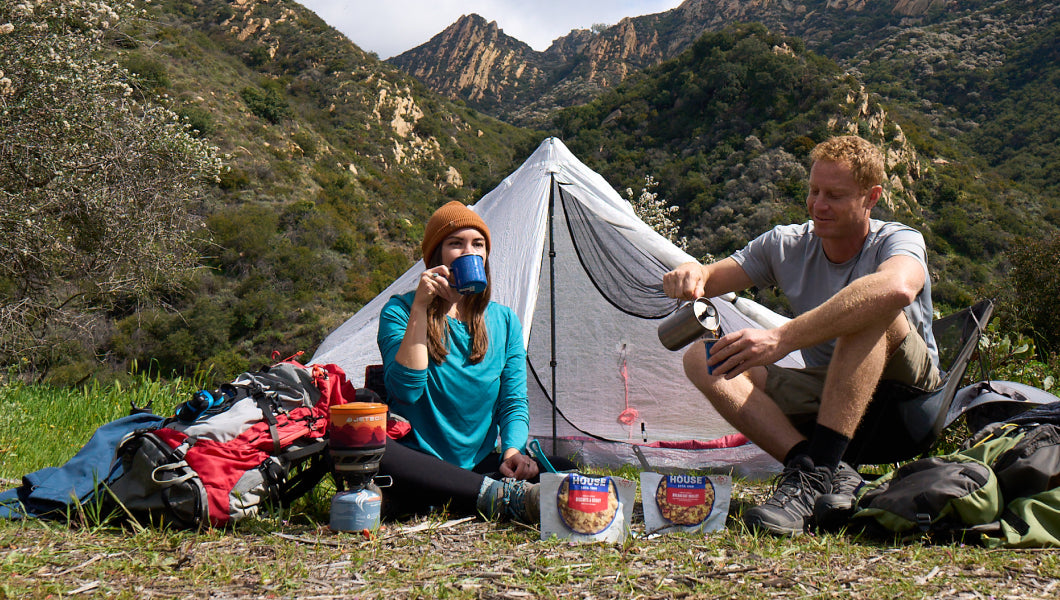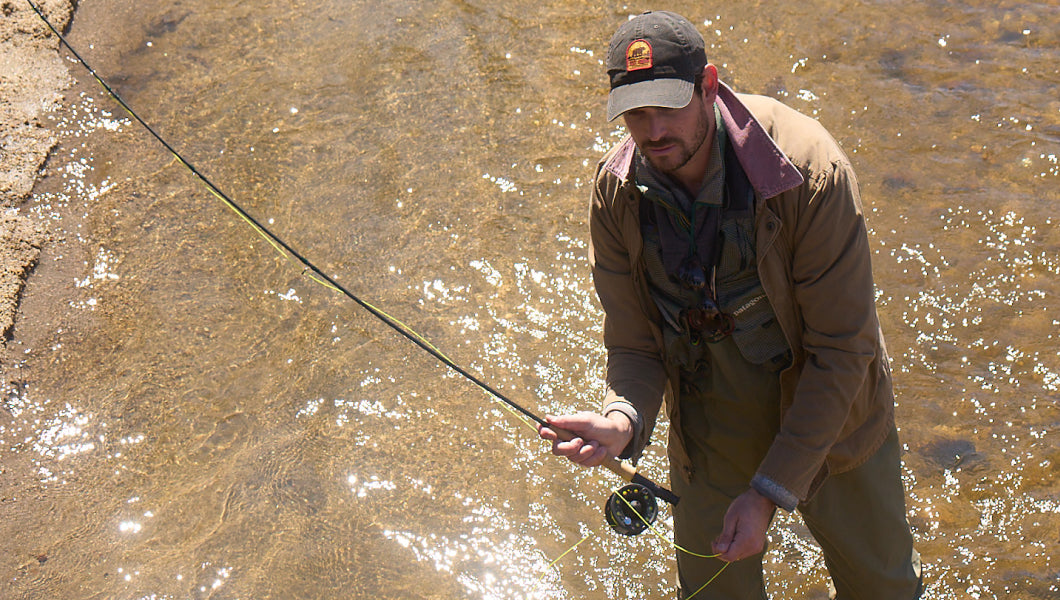Inspired for an Adventure? Check out Beef Stroganoff - Pouch and Beef Stew - Pouch
Free Ground Shipping On All Orders
Over 2,100 Reviews
Add description, images, menus and links to your mega menu
A column with no settings can be used as a spacer
Link to your collections, sales and even external links
Add up to five columns
Add description, images, menus and links to your mega menu
A column with no settings can be used as a spacer
Link to your collections, sales and even external links
Add up to five columns

How to Hunt and Fish Without the Necessary Tools
If you’ve enjoyed Mountain House meals on a camping or backpacking trek—and if you haven’t, what are you waiting for?—you can imagine how handy they’d be in true wilderness survival situations: Our delicious, easy-to-prepare, long-lasting, and super-portable entrees and emergency food supplies can keep you well fed during an unexpectedly long sojourn in the backcountry without taxing your energy or your fuel resources.
Let’s say, though, you’re staring down a really extended stay in the wilderness: You’re hopelessly lost, say, or you’re somehow incapacitated, or a major storm or wildlife has you stuck for the foreseeable future. Hopefully, you shared your route and itinerary with others back home. But if help doesn’t look to be on the way anytime soon and you’re either forced to stay put in a remote country or travel some distance to get out, you may need to look to the wild larder for sustenance.
But what if you’re sans firearms or manufactured tackle? Well, keep in mind the obvious: People fished and hunted without such technology for millennia. We’ve compiled some tips and techniques for makeshift hunting and fishing in a life-or-death context: strategies worth studying and keeping in mind, though hopefully, you won’t have to put them to use. Speaking of…
A Major Disclaimer
We hope we don’t need to say this, but we’re going to say it anyway: The following tips and tactics are meant for real, honest-to-goodness survival situations when you’re stranded in the wilderness with little chance of quick escape or rescue. Hunting and fishing without the proper licenses is a major no-no, but obviously exceptional circumstances may necessitate it.
Besides illegality, there’s an equally important issue of ethics. A rifle or bow isn’t simply advantageous because it makes the task at hand easier for the hunter. Such weapons are also preferred because they can typically dispatch an animal more quickly and therefore humanely than, say, a sharpened stick. Across time and culture, many indigenous peoples obviously employed spears, clubs, bolas, and the like very effectively, but their efficient use requires great skill and practice. Don’t assume it’s easy to bring down an animal with a roughshod spear, and realize the undertaking is likely to cause some prolonged suffering on the part of the creature.
A starving person may have to resort to such measures, but—as any good hunter knows—they must be undertaken with the utmost respect for the animal.
Survival Fishing
On the whole, fish make a more promising survival food than mammals, birds, reptiles, or amphibians. For one thing, they’re often more abundant within a given landscape. For another, you’ve got more of an element of stealth on your side for many survival fishing techniques: Given you’re in an entirely different medium than your quarry, your own noise and movement are somewhat less of an impediment than they are, say, when you’re trying to catch a rabbit or grouse.
Fish also tend to be fairly easy to kill quickly, and—let’s not forget—many species make mighty fine eating.
So, how do you catch a fish without a rod and reel? Ask it really nicely to jump into your lap? (Hey, it’s worth a shot.) Actually, your options really are downright myriad, and include:
- making a net
- making a fishhook
- making a fish spear
- making a fish trap
- using your bare hands
- using a club
Obviously some of these tools and tactics can be used together. Let’s explore them in more detail.
Fishing With Makeshift Nets
A net’s handy because of its broad coverage and because many kinds can be used passively. For example, a gillnet strung across a current can snare fish as you go about attending to other survival matters.
Not long ago we wrote about the many virtues of paracord, and one of the uses we mentioned was making a gillnet from it. You can weave a lattice out of the fine inner strands and secure this netting to a floatline up top and a leadline on the bottom. In one common setup, the former floats by secured wood and the latter comes anchored with stones. To properly size the gaps in the netting, you need to have some rough idea of the kind and especially size of fish in a particular flow: A fish too small for the netting will slip through, of course, while one that’s too large might dismantle the whole setup. The best way to assess is to spend a little time observing the waterway and trying to gauge the heft of its finned inhabitants.
You could also fashion a rough-and-ready scoop net using rope or line woven into a basket shape and secured to a forked branch. If many fish are milling at the surface or clustered in the shallows, you may be able to scoop a few out with some swift wrist and forearm action.
How Do I Catch Fish Without a Net?
Nets are all well and good, but they’re also time-consuming to construct and maintain. Fishhooks, spears, and gigs are often easier and quicker to make.
How to Make a Fishing Hook
Many kinds of manmade or natural items can be shaped into a fishhook. Bend a nail, for instance, or use a safety pin. You can make a more substantial fishhook for larger fish using a small pocketknife. Lash the blade partly open at an acute angle and secure the handle to a line. Two knives thus lashed open and tied together opposite one another make a double-barbed hook.
You can also carve fishhooks from wood. Take advantage of the natural crook created by a forked twig or a sharp-angled twig spur by whittling one twig (in the case of the former) or the spur down to a barb.
You can also rig a hook from two separate pieces of wood:
- Carve down a twig to form the shank.
- Whittle a wood splinter to make the barb.
- Use an inner paracord strand or some other fine line to lash the barb at acute upward-pointing angle to the base of the shank.
- Add another splinter barb in the same manner if so desired.
Presuming you’ve caught at least one fish—or at least gotten your hands on a carcass—a fish bone can also work as an effective barb.
Obtaining Bait
Depending on the season, invertebrates to serve as bait may be pretty easy to come by. You can use a light at night to attract large quantities of insects for the purpose.
If you catch a fish, check its stomach contents to find out what it’s been eating, and then see if you can’t muster up some of that as bait.
Crayfish often prowl freshwater streams, and these lobster-like crustaceans can make excellent fish bait as well as excellent human chow. They’ll go after a variety of bait, including meat scraps. If you’re seeing plentiful crayfish in a riffle, tie some meat to a string and toss it out there. If a crayfish nabs it in its pincers, quickly jerk the line in and you may well haul the scavenger out before it can let go.
How Do I Fish Without Bait?
What if the season or the environment isn’t conducive to finding live bait? Well, you can always try a lure: Any bit of shiny metal might do the trick.
Spearing or gigging fish (and frogs, too) is an age-old way to obtain dinner, but it takes practice to pull off. (But hey, nothing like desperate hunger as motivation to keep trying, right?) A stick whittled to a point is a start, but better to carve a barbed spear or gig.
Take advantage of the same kind of natural branch configuration we mentioned above for hook-making, only look for it at a larger scale: A forked bough or one with a sharp twig spur can be made into a barbed spear. You can also create a gig out of the former by whittling both “tines” into sharp points. If a forked branch isn’t readily available or you want tighter tines, you can split a branch end, wedge it open with a securely lashed pebble or stub of wood, and then sharpen the prongs.
Gigging is most effectively carried out in shallow waters at night with the aid of a light.
Survival Fish Traps
Another long-used method for catching fish without bait is by trapping them in confined areas where they’re easily speared, clubbed, or simply snatched by hand.
One way to make a fish trap requires a number of wooden stakes and, ideally, some netting. The stakes need to be longer than the depth of the water you’re fishing. By driving the stakes upright into the bottom, assemble a funnel whose narrow end opens to a staked-off “holding pen.” (Netting can be used to make this funnel more fish-proof.) A fish swimming up the funnel and forced into the pen will often be unable to find its way back out through the little gap it entered by.
Fish With Hands
Using a fish trap or—less effective and a lot splashier—herding fish bodily into shallows, you may be able to pluck your slippery quarry right out of the water by hand.
Fishing by hand may also be feasible during a spawning run when fish—say, salmon or smelt—are jammed together in great numbers. (Catching by hand, incidentally, is the only legal way to harvest grunion in California during that little ocean fish’s breeding shenanigans on nighttime beaches.)
A Few Words on Survival Hunting
If fish aren’t available or are proving too wily for you, you may need to set your sights on red meat. Going after something like deer or elk is a sketchy proposition for your average person in survival straits, especially somebody without much in the way of prior hunting experience. We’re talking major energy expenditure, the potential risk of injury, and big animals that are all-around hard to bring down with wilderness survival weapons.
Small game and birds are typically more abundant and easier to catch. One classic contraption of primitive hunting is the deadfall, which can be quite effective for such prey. You prop a log or boulder up with a stick and bait the zone below. An animal attracted to the bait knocks out the stick and—well, we don’t have to spell it out from here.
As we wrote about in that paracord blogpost, you can also use the inner kerf of parachute cord to fashion a survival snare for catching squirrels or rabbits. Position it along a heavily used runway—betrayed by tracks in snow, for instance, or by a matted-down, tunnel-like path through grass. You can also use a pit trap: Dig a broad, deep hole along this route, then use branches and foliage to hide it.
But, Mostly: Stick to Mountain House!
Perhaps some of the above advice will prove life-saving someday. Hopefully, though, you’ll just be kicking back at the campsite with some piping-hot Mountain House goodness, waving at the friendly woodland creatures and the fishes in the flow without having to worry about getting them on your plate!

How to Clean a Fish Before Cooking Step-by-Step Guide

Best Ice Fishing Lakes in the United States for Anglers


Stay Hungry for Adventure
Sign Up for Delicious Outdoor Meals & Exclusive Offers!


Join the adventure
©2024 Mountain House — All Rights Reserved.
Your Cart is Empty
Continue ShoppingYour Cart
Subtotal
$0.00
EXPRESS PAYMENT METHODS AVAILABLE IN CHECKOUT
Taxes and Shipping Calculated at Checkout














